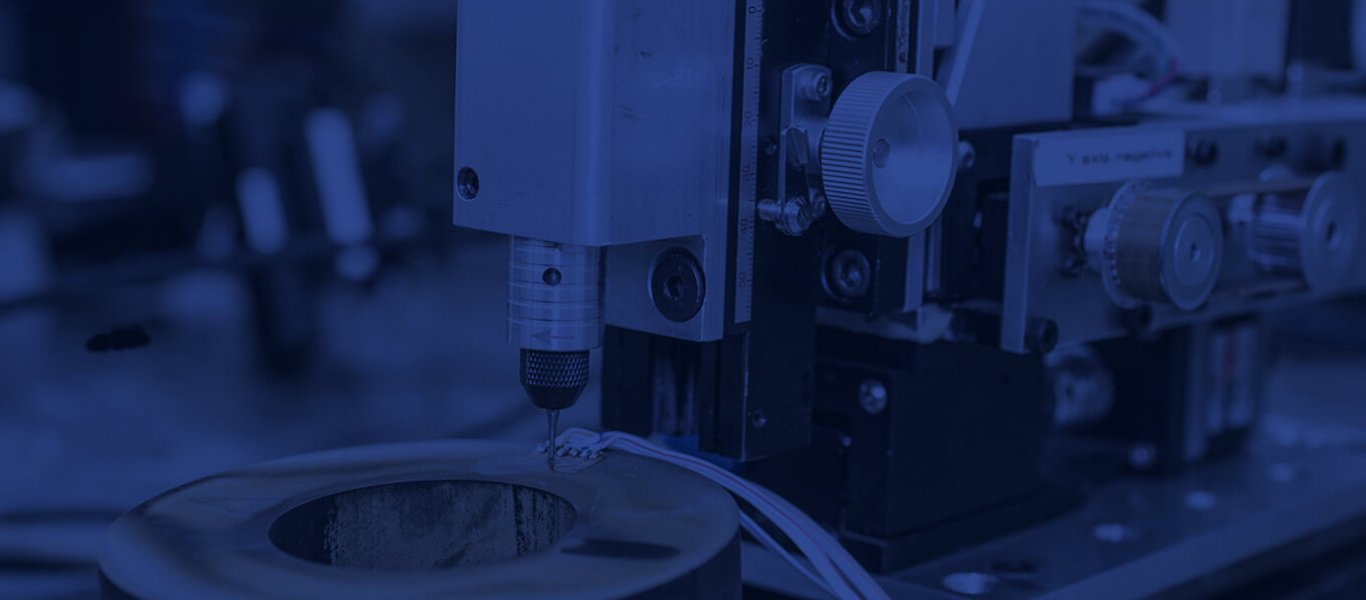Centre-Hole Drilling
The Centre-Hole Drilling (CHD) residual stress measurement technique is a semi-invasive, mechanical strain relief (MSR) technique.
The CHD technique is performed by measuring the surface strains caused by the relief of residual stresses during the incremental machining of a shallow hole in a component. The principle is that the removal of the stressed material results in the surrounding material readjusting its stress state to re-attain residual stress equilibrium. The measured surface strains allow for the back calculation of the previously existing residual stresses. The formulae and calculations derived for the back calculation process are developed from a combination of experimental and Finite Element analyses.
 Schematic of the ICHD technique
Schematic of the ICHD technique
The residual stresses calculated from the incremental strain measurements can be analysed to provide either a single set of bi-axial results averaged over the depth drilled (i.e. CHD) or a variation in bi-axial residual stresses with depth drilled (i.e. Incremental Centre-Hole Drilling or ICHD). The most widely used analysis methods are the Power Series and Integral methods.
The surface strains are usually measured using a special strain gauge rosette (SGR) attached concentrically around the drilled hole. Within the rosette are positioned three strain gauges, radially aligned around the drilled-hole axis with a relative angular spacing of 45o. Use of the three strain gauge rosette permits measurement of the bi-axial residual stress state (i.e. σxx, σyy and σxy). The standard sizes of strain gauge rosette available cater for drilled hole diameters of roughly 1mm, 2mm and 4mm, producing biaxial residual stress results for depths up to 0.5mm, 1.0mm and 2.0mm respectively.
Procedure of the Centre-Hole Drilling Technique:
The basic experimental procedure is as follows:
- Prepare (e.g. smooth and degrease) the component surface at the measurement location.
- Glue the CHD strain gauge rosette to the component and attach the lead wires.
- Align the CHD machine with the SGR.
- Drill the central hole in a series of increments.
- Measure the hole depth and record the strain gauge readings for each increment drilled.
- Analyse the depth and strain gauge data to calculate the residual stress distribution.
The method does suffer from limited strain sensitivity and potential errors and uncertainties related to the dimensions of the hole (e.g. diameter, concentricity, profile, depth), surface roughness, surface flatness and specimen preparation. However the ICHD technique is the most widely used technique due to being cheap, quick and widely available, both in the lab and on-site.

Finite element simulation of the ICHD technique (sectional view)
Advantages of the Centre-Hole Drilling Technique:
- Semi-destructive – enabling repeated residual stress measurements at many different stages in component life;
- Laboratory or “on-site” measurements;
- Bi-axial residual stress distribution measured (e.g. σxx, σyy and τxy), including stress gradients;
- Applicable to a wide range of materials, both metallic and non metallic;
- Indifferent to grain structure/texture of the component material;
- Nominal accuracy: 10MPa – Aluminium, 30MPa – Steel, 15MPa – Titanium;
- Very quick and easy to apply the process, and therefore relatively cheap;
- Very good for measuring near-surface residual stresses due to surface treatments.
Disadvantages of the Centre-Hole Drilling Technique:
- Semi-destructive – the resultant hole might need to be re-filled or a mock-up be provided;
- Maximum depth of measurement is 2mm using standard SGRs;
- σzz is not measurable;
- Increased uncertainty when measuring residual stresses greater than roughly 80% of yield due to plastic relaxation;
- A moderately flat surface for attaching the SGR is required, so application on complex shaped components is limited;
- Strain gauges used are susceptible to noise and require surface preparation;
- Heavily reliant on good strain response curves;
- Inaccuracies due to stresses being relieved at depths, but strains measured at the surface;
- Very sensitive to non-concentricity between the SGR and drilled hole.
References & Further Reading:
- ASTM-E837-13a, “Standard test method for determining residual stresses by the hole-drilling strain-gage method”, ASTM International, 2008.
- P. V. Grant, J. D. Lord and P. S. Whitehead, “The measurement of residual stress by the Incremental Hole Drilling Technique”, NPL Measurement Good Practice Guide.
- G. S. Schajer, “Measurement of non-uniform residual stresses using the hole drilling method. part 1 - stress calculation procedures”, Journal of Engineering Materials and Technology, vol. 110, no. 1, pp. 338–343, 1988.
- G. S. Schajer, “Measurement of non-uniform residual stresses using the hole drilling method. part 2 - stress calculation procedures”, Journal of Engineering Materials and Technology, vol. 110, no. 1, pp. 344–349, 1988.
- G. S. Schajer and E. Altus, “Stress calculation error analysis for incremental hole-drilling residual stress measurements”, Journal of Engineering Materials and Technology, vol. 118, no. 1, pp. 120–126, 1996.
- B. Zuccarello, “Optimal calculation steps for the evaluation of residual stress by the incremental hole-drilling method”, Experimental Mechanics, vol. 39, no. 02, pp. 117–124, 1999.








